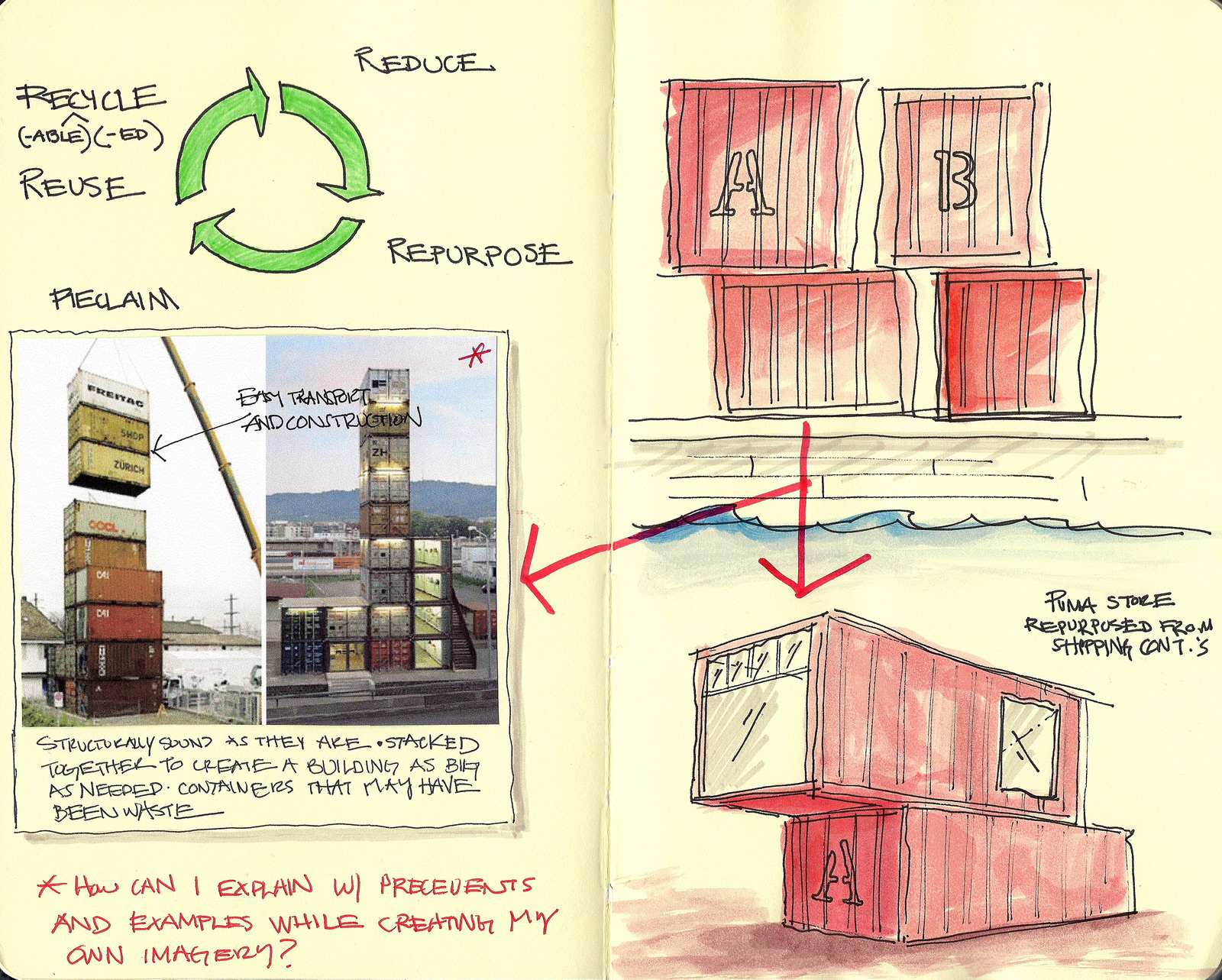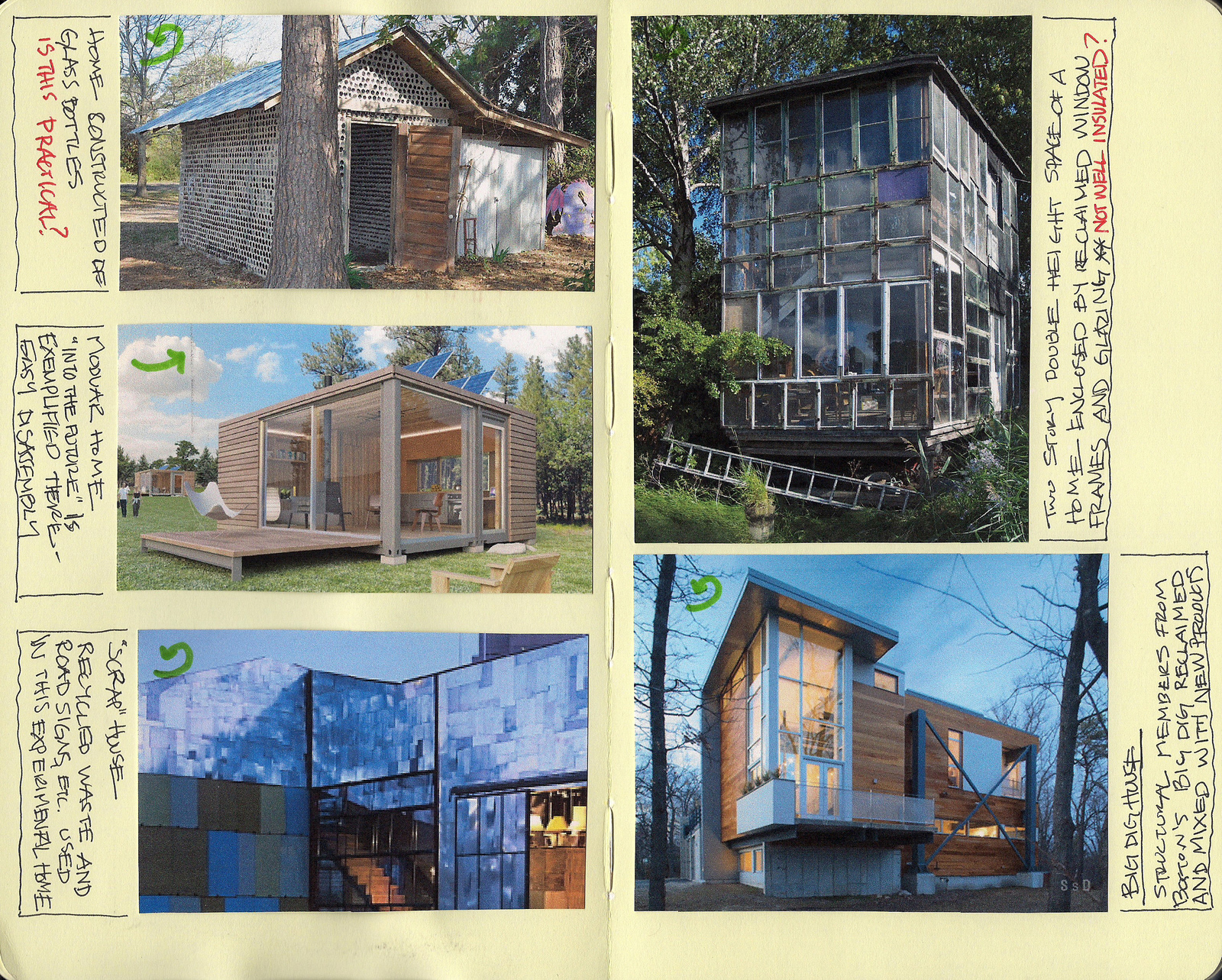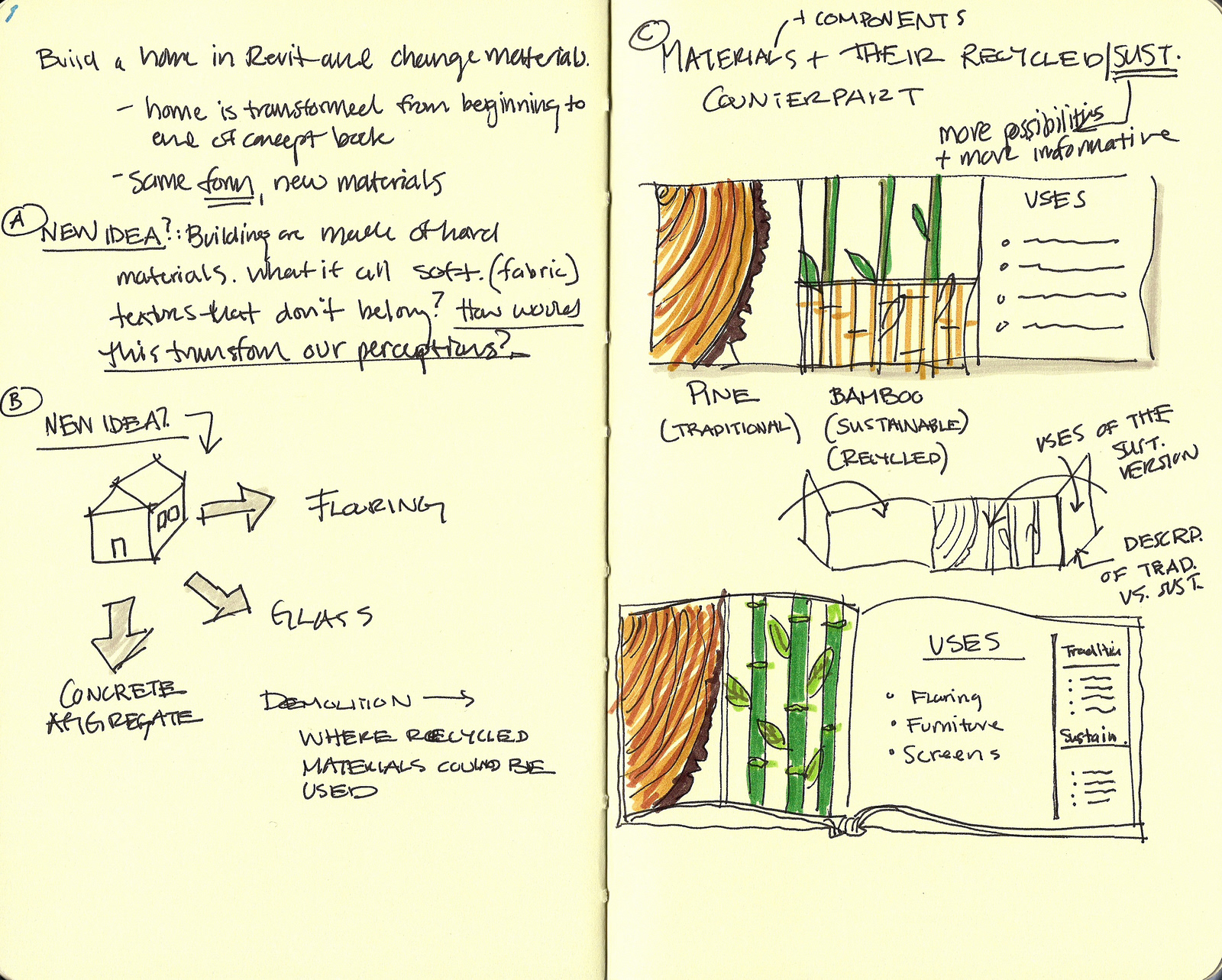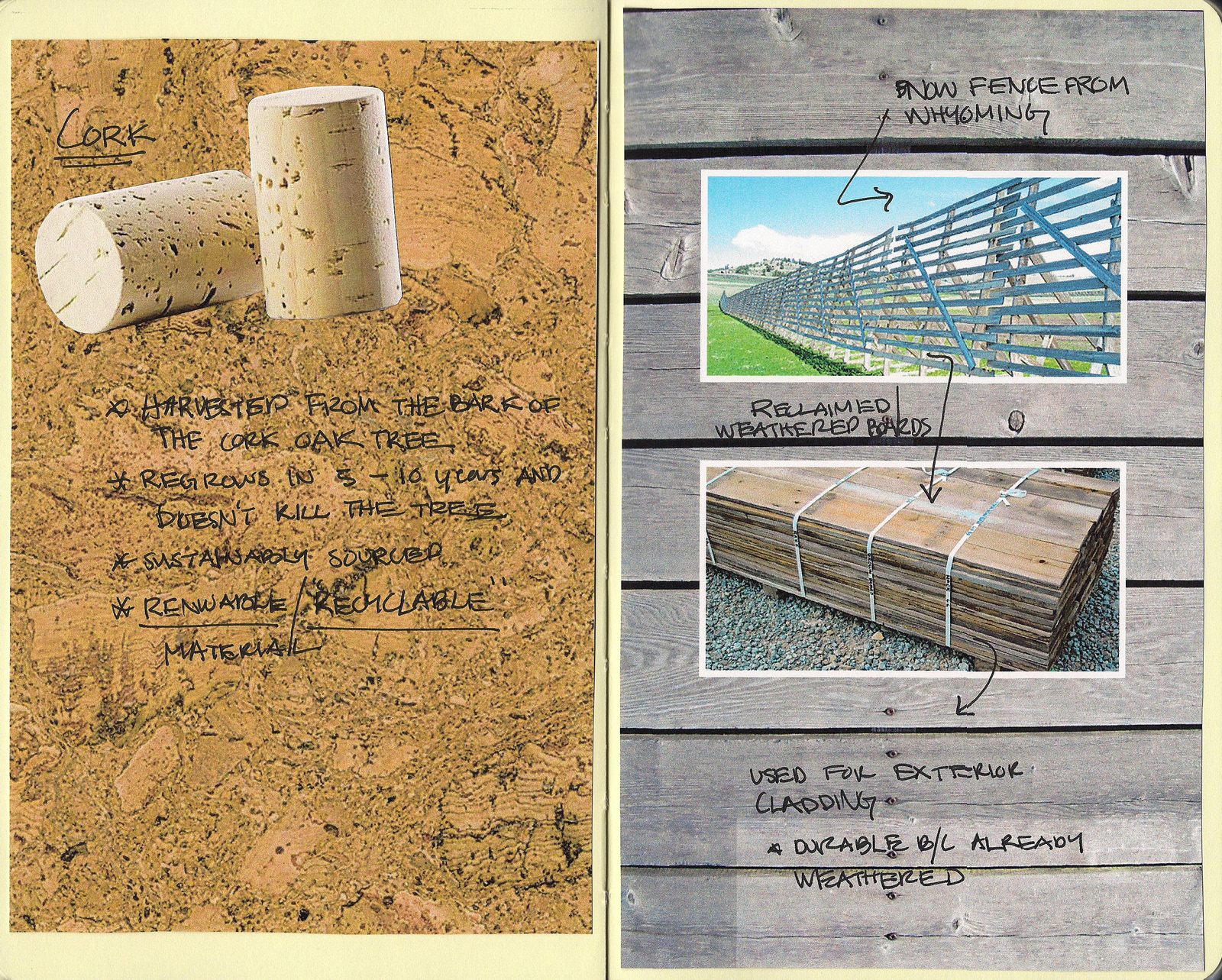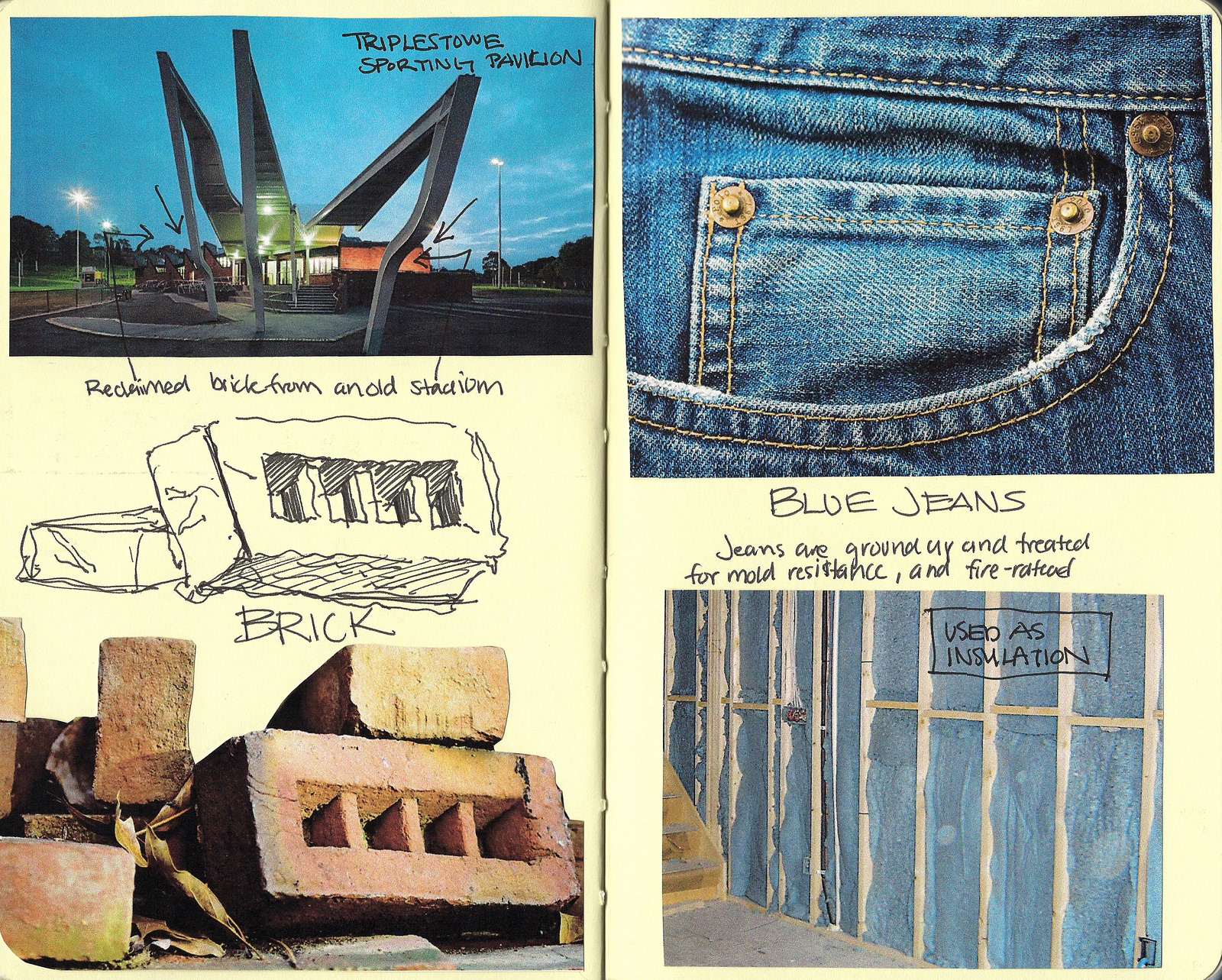Why should buildings be built of recycled materials? So much energy is embodied in the products that we use and discard every day, such as plastic milk jugs, aluminum cans and glass juice bottles. Commercial construction in the United States uses 72% of the electricity generated, 39% of all energy, and 40% of all raw materials. Wood and crude oil are examples of raw materials that must be processed and refined through energy intensive processes to produce those products that we discard without a thought. Building materials are manufactured with the same basic methods. If our waste can be reconfigured, re-purposed, reclaimed, and reformed—all in all, recycled—we can reduce the amount of building products that would otherwise need to be manufactured from scratch and, thus, use more energy than necessary. There are other items, like shipping containers, airplanes and rubber tires, that may simply be deemed "junk" and condemned to sit in a landfill forever. The skillful reuse of all of these materials, when combined with highly renewable sources, like cork and bamboo, can result in an architecture that is respectful of the planet's delicate environmental balance.
This book aims to reveal the incredible and sometimes unexpected transformation from waste to architectural products and creations that utilize the embodied energy of their recycled components.
Introduction Booklet, 8"x8"
Concept Book

